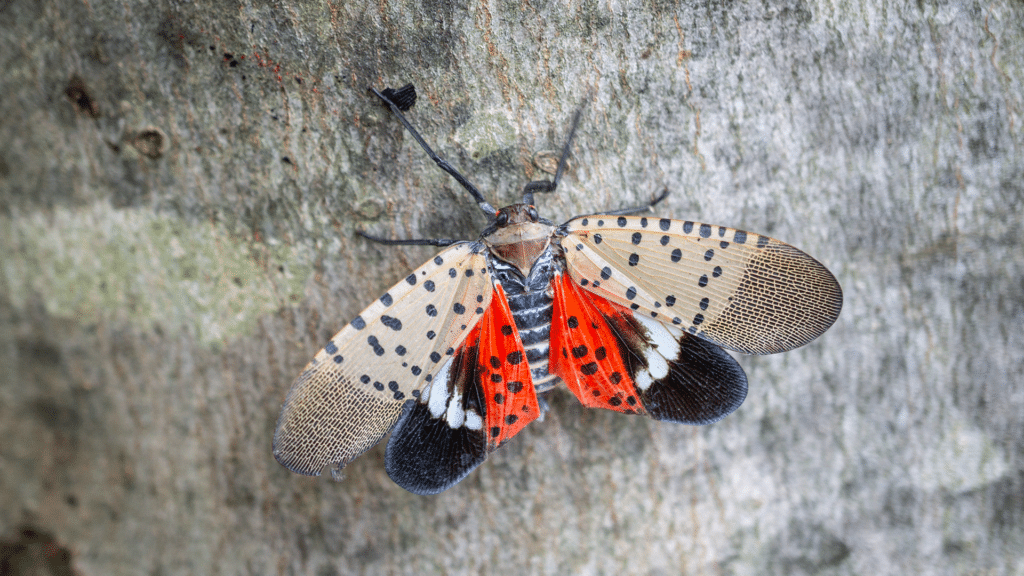The Spotted Lanternfly

The Spotted Lanternfly
(Updated November 2022)
The spotted lanternfly has become more firmly established in Ohio, with established populations in Cuyahoga, Lorain and Jefferson counties. Last month, this insect was positively identified in Hamilton County (near the Mill Creek) and its arrival may have been via the rail system. The Ohio Department of Agriculture (ODA) asks that individuals keep watch for the spotted lanternfly and if detected take the following steps:
- Eggs- scrape them off the tree or other surface, double bag them and throw them away. Alcohol or hand sanitizer can also be used to kill them. Report all destroyed egg masses.
- Specimens- Collect and report specimens to the ODA. Specimens can be placed in a plastic bag and frozen.
The following link allows you to report a suspected spotted lanternfly in Ohio by completing the form or scanning a QR code. There is a “general information tab” and a “report suspected” tab.
https://agri.ohio.gov/divisions/plant-health/invasive-pests/slf
(This post was originally written in March 2021)
Traveling this summer? Beware of unwanted hitchhikers. The spotted lanternfly (Lycorma delicatula) has officially entered Ohio with a confirmed population in Jefferson County. This insect was first reported in Pennsylvania in 2014 and now resides in several eastern states. Lanternflies are poor fliers but can hitchhike. Large egg masses are formed and these masses are laid on trees, wood or rusty metal (e.g. old train cars). It is these egg masses that are often moved by human assisted spread.
The spotted lanternfly can congregate in large numbers and preferred hosts are Tree of Heaven and grapes but spotted lanternflies have been documented on a variety of species. These phloem feeders concern fruit producers as their large numbers can cause a nuisance. They squirt honeydew from their abdomen (which can rain down on people) and this substance promotes the growth of black sooty mold.
If you are traveling east, do not pack up the lanterfly when you return home. Check yourself and your belongings for any tag-alongs. Adults are the easiest to spot and are most abundant late summer through fall.



